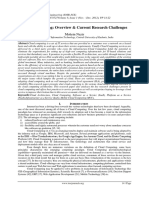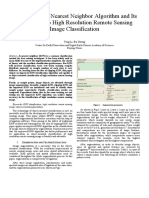0% found this document useful (0 votes)
24 views3 pagesDetailed Introduction To Cloud Computing
Cloud computing is the on-demand delivery of IT resources over the Internet, allowing users to access services like computing power and storage without maintaining physical infrastructure. It has evolved from the 1960s concept of utility computing to a mature industry with various applications, including SaaS, big data analytics, and AI. The benefits include lower costs, rapid deployment, and enhanced flexibility, making it a key driver of digital transformation for organizations.
Uploaded by
bhanuurathore12Copyright
© © All Rights Reserved
We take content rights seriously. If you suspect this is your content, claim it here.
Available Formats
Download as PDF, TXT or read online on Scribd
0% found this document useful (0 votes)
24 views3 pagesDetailed Introduction To Cloud Computing
Cloud computing is the on-demand delivery of IT resources over the Internet, allowing users to access services like computing power and storage without maintaining physical infrastructure. It has evolved from the 1960s concept of utility computing to a mature industry with various applications, including SaaS, big data analytics, and AI. The benefits include lower costs, rapid deployment, and enhanced flexibility, making it a key driver of digital transformation for organizations.
Uploaded by
bhanuurathore12Copyright
© © All Rights Reserved
We take content rights seriously. If you suspect this is your content, claim it here.
Available Formats
Download as PDF, TXT or read online on Scribd
/ 3























































































